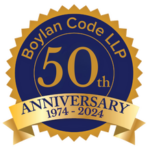 As most surely know by now, the Tax Cuts and Jobs Act of 2017 (the “Act”) was signed into law on December 22, 2017, and became effective on January 1, 2018. One of the most significant provisions of the Act for purposes of entity selection is its creation of a 20% deduction of “qualified business income” for owners of pass-through entities. The deduction, which is codified at 26 USC § 199A, goes into effect for the 2018 tax year and is scheduled to expire at the end of the 2025 tax year and applies regardless of whether the taxpayer itemizes deductions. Pass-through entities are those organizations that do not pay any entity-level corporate tax and instead pass income and loss through to their owners for tax purposes. Pass-through entities include sole proprietorships; partnerships; limited liability companies taxed as partnerships or as corporations with a subchapter S election; limited liability companies treated as disregarded entities; and subchapter S corporations. Pass-through entities are the types of entities often used by small to medium size businesses and many large businesses. Income from real estate investment trusts (“REITs”) and publicly traded partnerships can also qualify for the deduction.
As most surely know by now, the Tax Cuts and Jobs Act of 2017 (the “Act”) was signed into law on December 22, 2017, and became effective on January 1, 2018. One of the most significant provisions of the Act for purposes of entity selection is its creation of a 20% deduction of “qualified business income” for owners of pass-through entities. The deduction, which is codified at 26 USC § 199A, goes into effect for the 2018 tax year and is scheduled to expire at the end of the 2025 tax year and applies regardless of whether the taxpayer itemizes deductions. Pass-through entities are those organizations that do not pay any entity-level corporate tax and instead pass income and loss through to their owners for tax purposes. Pass-through entities include sole proprietorships; partnerships; limited liability companies taxed as partnerships or as corporations with a subchapter S election; limited liability companies treated as disregarded entities; and subchapter S corporations. Pass-through entities are the types of entities often used by small to medium size businesses and many large businesses. Income from real estate investment trusts (“REITs”) and publicly traded partnerships can also qualify for the deduction.
General Overview of Deduction:
First, some very general information on the new deduction. The Act allows an owner of a pass-through entity to deduct on the owner’s tax return 20% of his or her “qualified business income” with respect to any qualified business or trade. [1] Qualified business income, in turn, is defined under Section 199A(c)(1) as “the net amount of qualified items of income, gain, deduction, and loss with respect to any qualified trade or business of the taxpayer,” essentially profit.
There are, however, some important limitations on the 20% deduction. An owner of a trade or business that constitutes a “specified service trade or business” is only entitled to the full deduction if the owner’s taxable income is below a certain level, as discussed below. The Act defines a “specified service trade or business” by incorporating the service businesses listed in Section 1202(e)(3)(A) of the Internal Revenue Code, with the exception of engineering and architecture. The limitation, therefore, applies to owners of businesses providing services in the fields of health, law, accounting, actuarial science, performing arts, consulting, athletics, financial services, brokerage services, or any trade or business where the principal asset of such trade or business is the reputation or skill of one or more of its employees. This last category is one which, read broadly, could encompass numerous other types of service businesses not specifically listed. The Act further includes within the definition of “specified service trade or business” any trade or business providing services that consist of “investing and investment management, trading, or dealing in securities, partnership interests, or commodities.” Section 199A(d)(2)(B).
An owner of a business that constitutes a “specified service trade or business” is only entitled to the full deduction of 20% of the owner’s qualified business income from such a business if the owner’s taxable income is less than $157,500.00 (or $315,000 if married, filing jointly). The deduction begins to phase out (through the application of a somewhat complicated formula based on the limitation formula described below for all other businesses) at those income levels and completely phases out at $207,500 for single taxpayers (or $415,000 for married taxpayers filing jointly).
Owners of businesses that are not within one of those disfavored fields are not subject to the automatic limitation described above but are subject to a separate potential limitation. In particular, if such an owner has taxable income above $207,500.00 (or $415,000 if married, filing jointly), then the deduction will typically be equal to the lesser of: (A) 20% of the taxpayer’s qualified business income; or (B) the greater of: (i) 50% of the taxpayer’s allocable share of the business’s W-2 wages; or (ii) the sum of 25% of the taxpayer’s allocable share of the business’s W-2 wages plus 2.5% of the taxpayer’s share of the unadjusted basis immediately after acquisition of the business’s depreciable assets. If the owner’s taxable income does not exceed $157,500.00 (or $315,000 if married, filing jointly), then the wage or wage and property limitation described in (B) does not apply, and the owner is simply entitled to a deduction equal to 20% of the taxpayer’s qualified business income. Taxpayers with taxable income between $157,500 and $207,500 (or $315,000 and $415,000 if married, filing jointly) are subject to a phase-in of the limitation described in (B). It should be noted that the limitation described in (B) does not apply to qualified REIT dividends and income from qualified publicly traded partnerships.
Entity Selection Issues:
It is important to recognize, both for purposes of determining the amount of the deduction and entity selection, that Section 199A(c)(4) provides that “qualified business income” shall not include, and thus the 20% deduction does not apply to (1) reasonable compensation paid to the taxpayer for services rendered with respect to the business; (2) guaranteed payments paid to a partner for services rendered with respect to the business; or (3) payments to a partner other than in his or her capacity as a partner with respect to the business.
Dividend distributions to owners of subchapter S corporations are not subject to payroll taxes, which include Medicaid, Medicare, and Social Security taxes. The payroll tax totals 15.3%, including both the employee and employer contributions. In order to prevent a subchapter S corporation from paying all of its income to shareholders as dividends and thus avoiding payroll taxes on any of the amounts paid to shareholders, subchapter S corporations are required to pay “reasonable compensation” to a shareholder for services rendered by a shareholder to a corporation. Owners of subchapter S corporations will, therefore, only be entitled to utilize the Act’s 20% deduction against that portion of the owner’s income from the subchapter S corporation that is not considered reasonable compensation for the shareholder’s services to the corporation.
In contrast, since all of the income of sole proprietors, partners, and members of limited liability companies taxed as partnerships or disregarded entities is typically subject to a payroll tax, there is no current requirement that such entities pay the owners “reasonable compensation.” There also is no requirement that partners be paid guaranteed payments, which are fixed amounts that are paid to a partner regardless of the entity’s income. Owners of such entities may therefore be able, subject to other limitations in the Act, to apply the 20% deduction to a greater share of their income than a shareholder of a subchapter S corporation. As a result, sole proprietorships, partnerships, and limited liability companies may now, in certain circumstances, become comparably more attractive entities from a tax perspective than subchapter S corporations. An important caveat, however, is that Section 199A directs the Secretary of the Treasury to prescribe regulations to carry out the purposes of Section 199A, and such regulations could very well apply the reasonable compensation requirement that currently applies to subchapter S corporations to all other pass-through entities. Indeed, the reasonable compensation requirement along with the broad category within the “specified service trade or business” definition, “any trade or business where the principal asset of such trade or business is the reputation or skill of one or more of its employees” seem like prime areas for regulation or guidance from the IRS. It is important to note that, unlike statutes, regulations may, in certain circumstances, be retroactive, particularly where the IRS seeks to prevent abuse.
Moreover, before deciding that a limited liability company is the preferred pass-through entity for tax purposes, the limitation based on W-2 wages or wages and property described above adds another layer to the analysis, particularly for owners of businesses that are not within one of the disfavored fields and have taxable income above the $157,500.00/$315,000 threshold. As noted above, the deduction for those owners is subject to a limitation based on the amount of W-2 wages paid by the business (or a combination of wages and property). Subchapter S corporations, particularly due to the reasonable compensation requirement discussed above, typically pay W-2 wages to the shareholders providing services to the business. In contrast, other pass-through entities, including limited liability companies taxed as partnerships or disregarded entities, generally do not pay W-2 wages to the owners. As a result, due to the W-2 wages paid to the shareholders, a subchapter S corporation may have a comparatively greater amount of W-2 wages than a similarly situated limited liability company taxed as a partnership or disregarded entity, which in turn could result in a higher limit on the taxpayer’s deduction when applying the W-2 wage limitation.
In sum, the specific provisions of the Act’s deduction for pass-through entities must now be factored into a pass-through entity selection decision. To do so requires applying the provisions of the deduction to the type of business involved as well as the anticipated financial situation of the business and its owners. Other tax considerations and factors such as current and future eligibility for a particular entity, future investor considerations, liability protection, and administrative formalities and expenses also still play an important role in any determination. Finally, the new reduced corporate tax rate of 21% will be an important consideration in deciding between a pass-through entity and an entity taxed as a C corporation.
[1] The actual details of the deduction and the income against which it can be applied are more complicated than outlined here. The goal of this article is to give a general very overview of the deduction and potential issues it raises for the selection of a pass-through entity.
Article was written by J. Michael Wood, Esq. with assistance from Jason Klimek, Esq.


